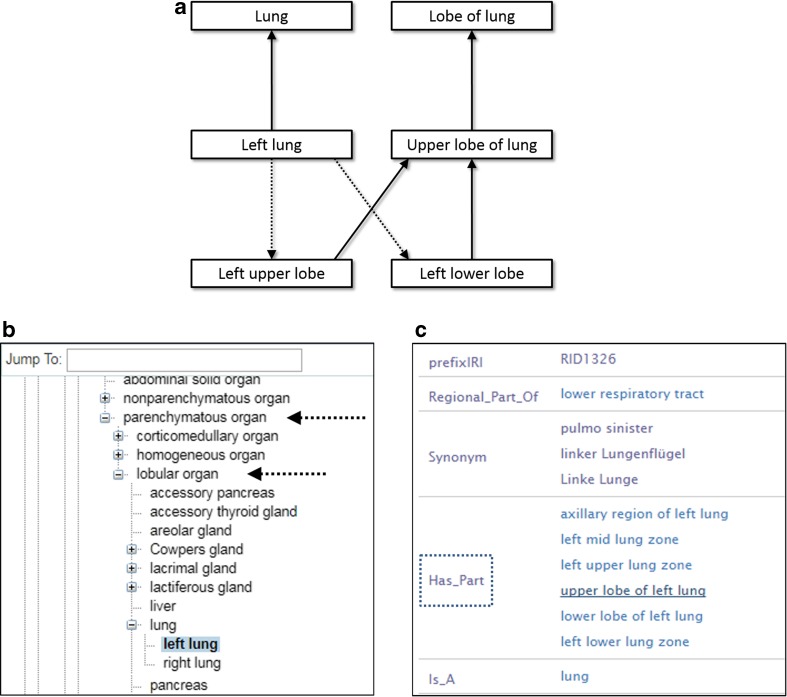Fig. 2.
The type hierarchy and part relationship in RadLex. RadLex is organized fundamentally by the Is-A hierarchy, or type hierarchy. By this principle, RadLex terms are encoded as a type of some higher level concept. RadLex concepts may also have other kinds of relationships, such as Has-Part, Has-Member, and Has-Innervation-Source. Consider the left lung and its lobes (a). Here, Is-A relationships are shown as solid arrows, and Has-Part relationships are shown as dotted arrows. The left lung is a type of lung, and therefore possesses the Is-A relationship to lung. The left lung also Has-Part “left upper lobe” and Has-Part “left lower lobe”. The lobes themselves, however, possess the Is-A relationship to “upper lobe of lung” which itself Is-A “lobe of lung.” Graphical browsers such as the BioPortal interface (portions shown here in panels b and c) display RadLex terms in an expandable tree (b) of concepts based on this Is-A hierarchy, together with concept metadata (c). Here, “left lung” (highlighted in blue) is shown as a subclass of “lung” (b) (itself a subclass of “lobular organ” which is in turn a subclass of “parenchymatous organ,” dotted arrows). The lobes of the left lung are shown in c via the Has-Part relationship (dotted box). The lobes of the left lung are not accessible by expanding the tree (b), since the lobes are not types of the left lung

